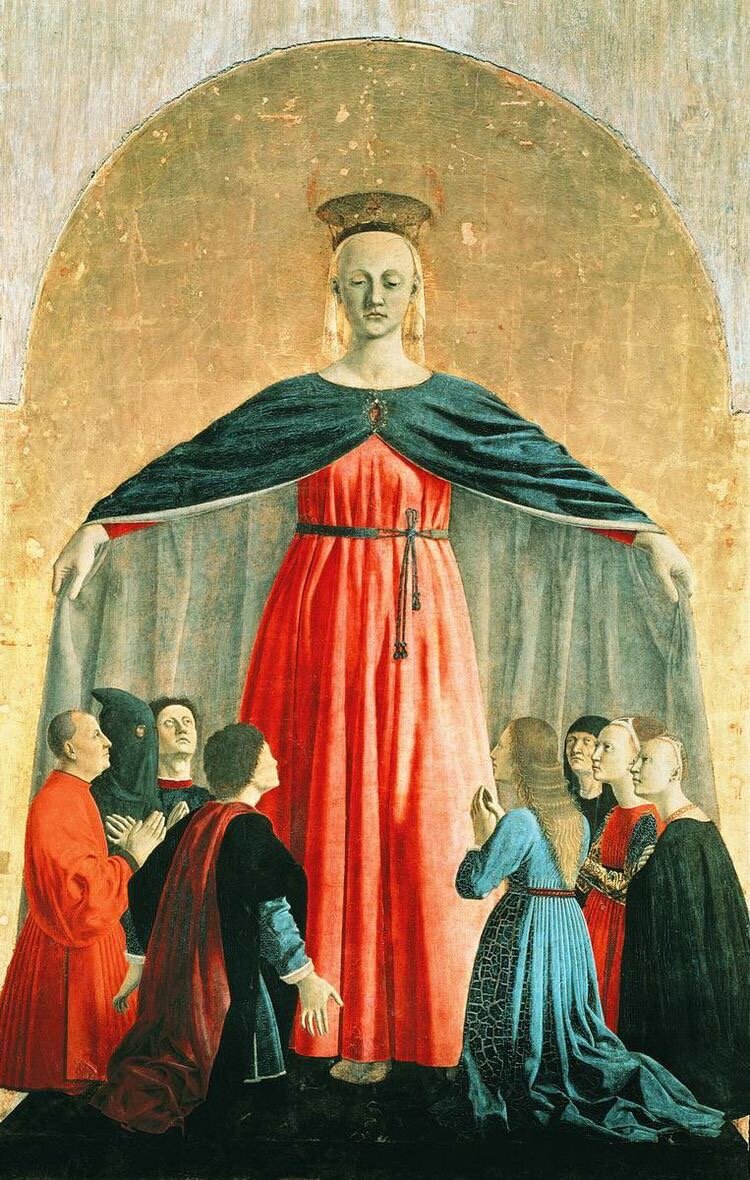Mother of Church
SUB TUUM PRAESIDIUM
We come to the end of our meditation on “The Mystical Cathedral” – Litany of Loreto. The goal of the meditation was not only to explain some of the individual invocations of the Loreto Litany. It also meant, to show a special relationship between Mary and the community of the Church of Christ. After all, the Mother of the Church was given to us as a role model. Therefore, in each of our reflections, we tried to emphasize the incredible truth: One Mother, two motherhoods
As the Bride of Christ, the Church learns from Mary a humble attitude of hearing the words of the Bridegroom. For he and his teachings are the most important for the Church and in the Church. This does not mean that the Church can be closed to the voice of the people, especially to the voice of her children. People of the Church should listen carefully to the voice of the world and its needs. However, this listening and meditation of the world always takes place in the light of God's truth. Of course, the Christ truth, kept in the Church, is not static but dynamic. This dynamism, however, has a special character, because it leads deep into human consciences to heal them. The ancient prayer of the Church ("Sub Tuum praesidium"), known since the third century, begins with the touching request: “We are under your protection, Holy Mother of God” . The pleading form of Marian prayers developed over time into a long litany, of which the most famous is the Loreto Litany.
The Catholic Church sees in Mary a model of life devoted to God and obedience to her Lord. Her openness to God's mystery, radical entrustment to Gabriel's word, and boundless love for Jesus Christ are an unparalleled model for the pilgrim Church on the path of faith. Orthodox theology, in turn, defines Mary as "the Church before the Church." All believers can admire in her the perfect fulfillment of the promises that Christ left to his church, obliging her to fulfill them.
Saint John Paul II beautifully wrote about it in the Encyclical Redemptoris Mater: " It is precisely in this ecclesial journey or pilgrimage through space and time, and even more through the history of souls, that Mary is present, as the one who is "blessed because she believed," as the one who advanced on the pilgrimage of faith, sharing unlike any other creature in the mystery of Christ. (...).Mary figured profoundly in the history of salvation and in a certain way unites and mirrors within herself the central truths of the faith." Among all believers she is like a "mirror" in which are reflected in the most profound and limpid way "the mighty works of God" (Acts 2:11)."(RM 25).
Throughout the centuries, Christians have called upon and honored Mary as their mother. Saint John Paul II have asked Mary to be a mother in a very personal way, especially in times of grief. Another title emphasizing Mary’s motherhood has been used throughout the ages, dating back to Saint Augustine and Saint Leo the Great. Saint Isaac of Stella (died 1169), a Cistercian monk, wrote about the inseparability of Mary and the Church.Mary, most closely connected to the Holy Spirit, received in perfect degrees the fullness of theological virtues: faith, hope and love.
“It is also important to note how the Church expresses in various effective attitudes of devotion the many relationships that bind her to Mary” said Saint Paul VI in the exhortation Marialis cultus. The Pope at the end of the third session of the Council (November 21, 1964) solemnly chose Mary as Mother of the Church: " Therefore, for the glory of the Virgin Mary and for Our own consolation, We proclaim the Most Blessed Mary Mother of the Church, that is to say of all the people of God, of the faithful as well as of the Pastors, who call her the most loving Mother. And We wish that the Mother of God should be still more honored and invoked by the entire Christian people by this most sweet title. This is a title, Venerable Brothers, not new to Christian piety; it is precisely by this title, in preference to all others, that the faithful and the Church address Mary. It truly is part of the genuine substance of devotion to Mary, finding its justification in the very dignity of the Mother of the Word Incarnate”.
Pope Francis in 2018 reinvigorated the title by proclaiming the Monday after Pentecost as the Memorial of the Blessed Virgin Mary, the Mother of the Church. Through Scripture and tradition, we clearly see how Mary has been “Mother of the Church.”
The Icon of our Lady of Jasna Góra, can be interpreted as a combination of both types of meditation on Mary's role in the work of salvation. Baby Jesus rests in the arms of the Mother, who gives her Son to believers, directing to them the words spoken in Cana to the ministers at the wedding: "do what the Son will tell you". We call this type of icon Hodegetria, which means "Guide on the way." Mary is here an image of the teaching Church which points to Jesus, the first teacher. His right hand is raised in a gesture of teaching, while his left hand holds the book of the Old Testament. The Church is therefore a guardian of faith, which has its source in both the Old and New Covenants. Mary is the Mother of Christ but also the Mother of the Church. Therefore, we treat the invocations of the Loreto Litany not only as praise addressed to her; We also want to find in them direction for our own lives. Mary, the Guide, leads the community of faith on the surest path to salvation in Christ.
Mother of Church, Pray for us
Until Tomorrow
Fr. George


